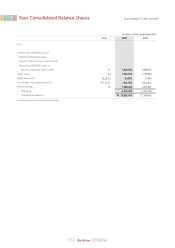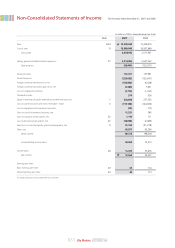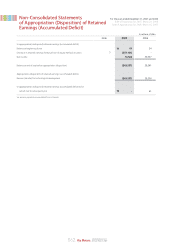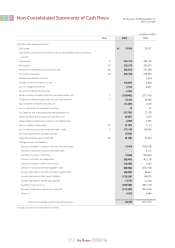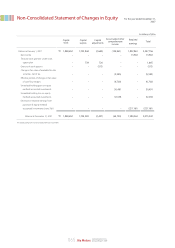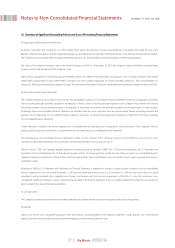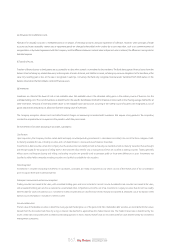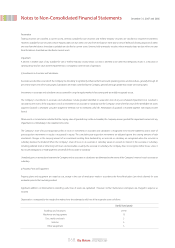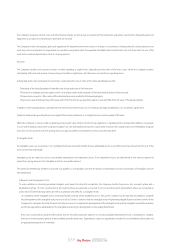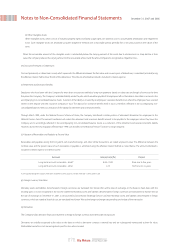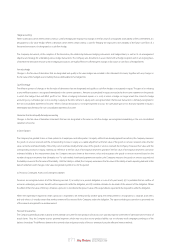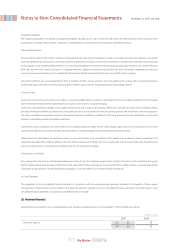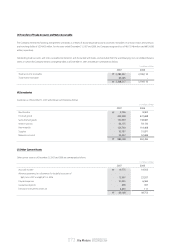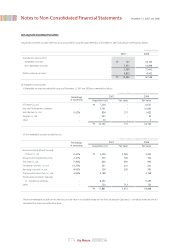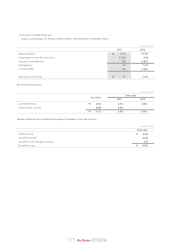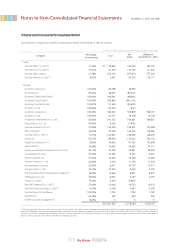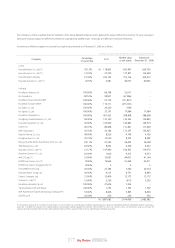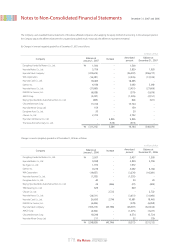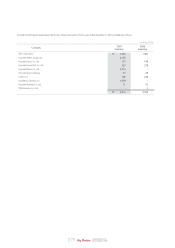Kia 2007 Annual Report Download - page 69
Download and view the complete annual report
Please find page 69 of the 2007 Kia annual report below. You can navigate through the pages in the report by either clicking on the pages listed below, or by using the keyword search tool below to find specific information within the annual report.
069_
Kia Motors Annual Report 2007
The Company recognizes interest costs and other financial charges on borrowings associated with the production, acquisition, construction of property, plant and
equipment as an expense in the period in which they are incurred.
The Company reviews the property, plant and equipment for impairment whenever events or changes in circumstances indicate that the carrying amount of an
asset may not be recoverable. An impairment loss would be recognized when the expected estimated undiscounted future net cash flows from the use of the
asset and its eventual disposal are less than its carrying amount.
(k) Leases
The Company classifies and accounts for leases as either operating or capital leases, depending on the terms of the lease. Leases where the Company assumes
substantially all the risks and rewards of ownership are classified as capital leases. All other leases are classified as operating leases.
Substantially all the risks and rewards of ownership is evidenced when one or more of the criteria listed below are met:
- Ownership of the leased property will transfer to the lessee at the end of the lease term.
- The lessee has a bargain purchase option, and it is reasonably certain at the inception of the lease that the option will be exercised.
- The lease term is equal to 75% or more of the estimated economic useful life of the leased property.
- The present value at the beginning of the lease term of the minimum lease payments equals or exceeds 90% of the fair value of the leased property.
In addition, if the leased property is specialized to the extent that only the lessee can use it without any major modification, it is considered a capital lease.
Payments made under operating leases are charged to the income statement on a straight-line basis over the period of the lease.
Where the Company is a lessee under a capital lease, the present value of future minimum lease payments is capitalized and a corresponding liability is recognized.
In a sale and leaseback contract, the Company recognizes the sale and leaseback transaction, respectively. However, the Company does not immediately recognize
any excess of sales proceeds over the carrying amount as gain, but defers and amortizes the amout over the lease term.
(l) Intangible Assets
An intangible asset is an asset where: (1) it is probable that future economic benefits that are attributable to the asset will flow into the entity and (2) the cost of the
asset can be measured reliably.
Intangible assets are stated at cost less accumulated amortization and impairment losses, if any. Impairment losses are determined as the amount required to
reduce the carrying amount of an intangible asset to its recoverable amount.
The criteria for determining whether an incurred cost qualifies as an intangible asset and the periods of amortization for each classification of intangible asset are
described below:
(i) Research and Development Costs
To assess whether an internally generated intangible asset meets the criteria for recognition, the Company classifies the process into a research phase and a
development phase. All costs incurred during the research phase are expensed as incurred. Costs incurred during the development phase are recognized as
assets only if all of the following criteria are met in accordance with SKAS No. 3, Intangible Assets:
(1) Completion of the intangible asset is technically feasible so that it will be available for use or sale; (2) the Company has the intention and ability to complete
the development of the intangible asset and use or sell it; (3) there is evidence that the intangible asset will generate probable future economic benefit; (4) the
Company has adequate technical, financial and other resources to complete the development of the intangible asset and the intangible asset will be available;
and (5) the expenditures attributable to the intangible asset during its development can be reliably determined
If the costs incurred fail to satisfy all of the criteria, they are recorded as periodic expenses as incurred. Capitalized development cost is amortized on a straight-
line basis over the expected periods to be benefited, generally three years. Expenditures subject to capitalization include the cost of materials, direct labor and
an appropriate proportion of overheads.



